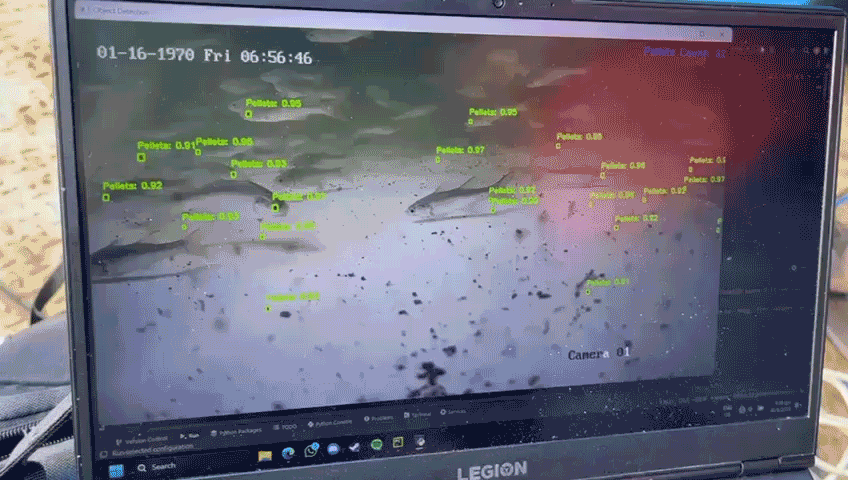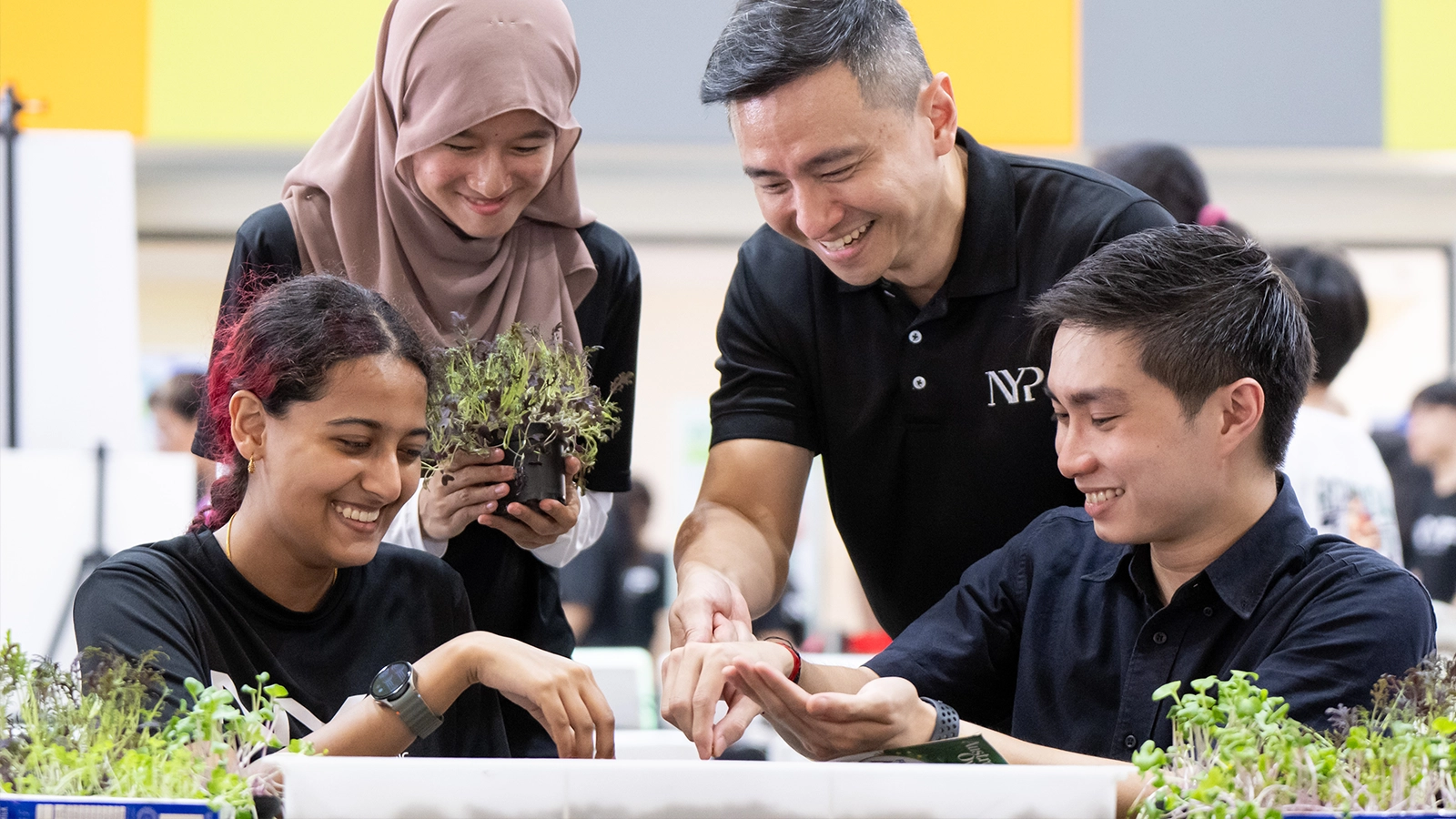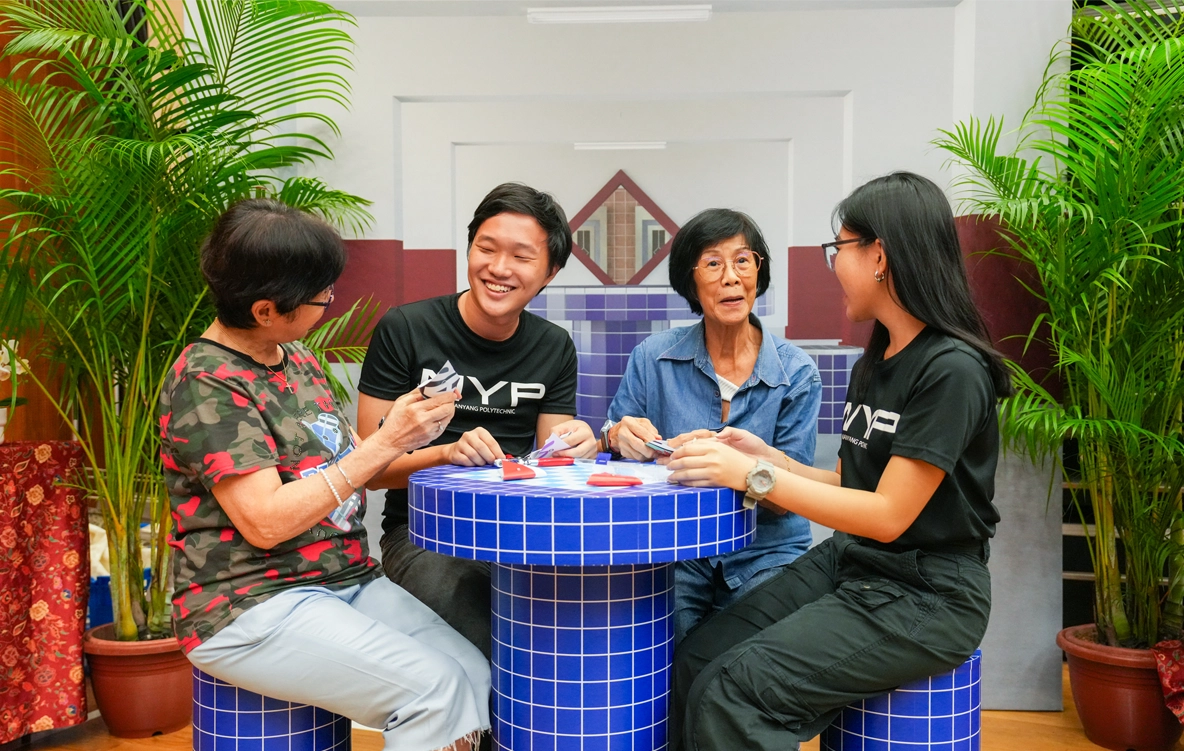The Fine Art of Feeding Fish
NYP is tackling a critical challenge in aquaculture: reducing feed wastage. With fish feeding making up about 60% of operating costs, it’s both labour-intensive and expensive.

The cross-School team, from left to right: Dr Jeffrey Seng Eng Khuan (SAS), Felix Yeo (SIT), Loh Chao Hong (SIT), and Poh Boon Kiat (SEG).
Three schools – School of Information Technology (SIT), School of Applied Science (SAS), and School of Engineering (SEG) – brought their expertise together to create the Intelligent Aquatic Feed Dispenser (i@FAD).
This device uses artificial intelligence to analyse fish feeding patterns and automates feed dispensing, optimising both quantity and timing. Once deployed, the i@FAD promises significant cost savings and helps mitigate the labour gaps impacting local fish farmers.
Explains Senior Lecturer Felix Yeo from SIT, who is also the principal investigator:
“We use a sub-field of AI known as semantic segmentation (under the class of deep learning). Using Computer Vision software and hardware, we capture real-time images of the fish and feed during feeding time, and assign a class label to each pixel in an image. This trains the machine learning model to classify and recognise the fish feed."
"Over time, such feed consumption data will be collected, aggregated, and analysed, forming predictive trends of the fish’s hunger states. This helps us to learn how to optimise the fish feeding patterns.”
To help farmers 'experiment' with the device and optimise their feed amounts, final-year SIT students were roped in to build a live dashboard. They also took into account variables like water clarity, and how to distinguish fish fecal matter from fish feed.
“We took hundreds of new photos and spent 1-2 weeks annotating the data,” said Joshua Lim, one of the students involved.

Each image had to be precisely labelled to ensure that the AI model could accurately recognise each object.
Joshua adds: “My greatest takeaway was that AI is a very powerful tool that can revolutionise aquaculture.”
This initiative supports the Singapore Food Agency’s '30 by 30' goal, aiming to boost our agri-food sector's ability to produce 30% of Singapore’s nutritional needs by 2030.

.jpeg)

